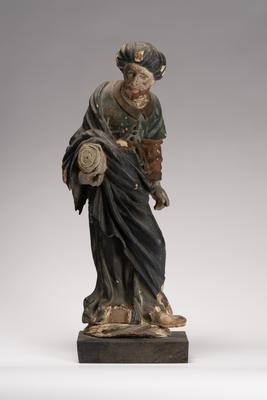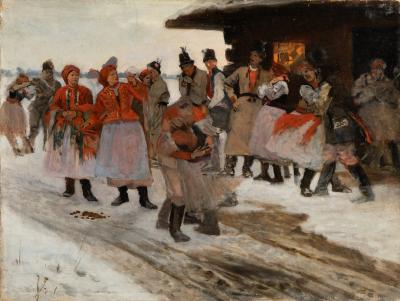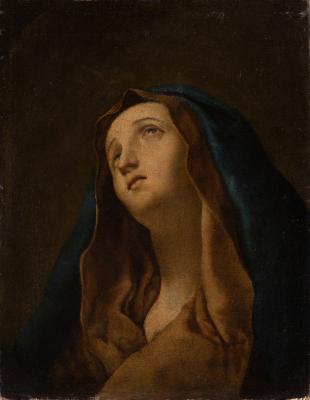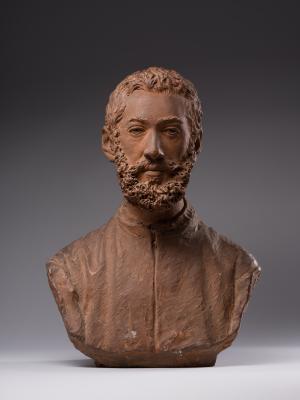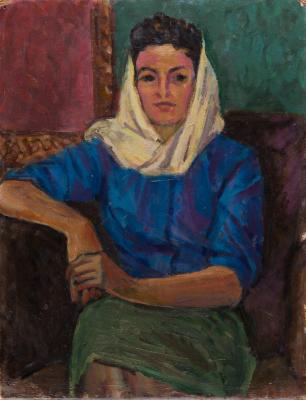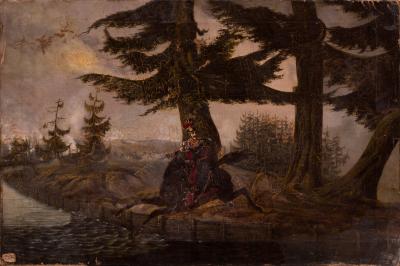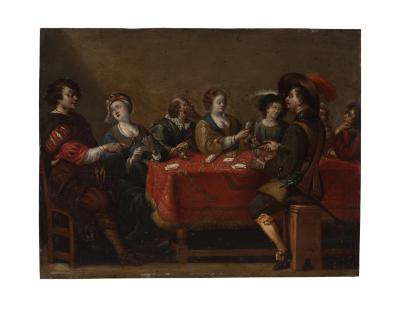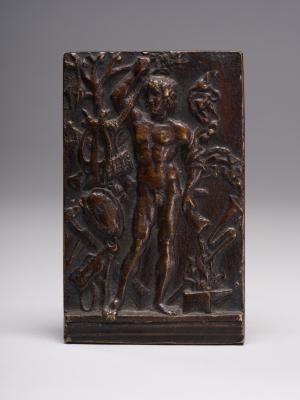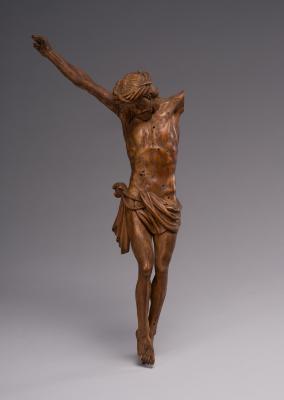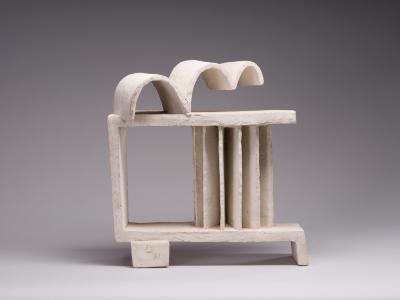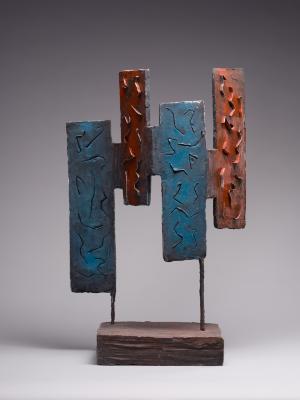The composition is known only in one version of 1816, which was issued in the album Raccolta di Cinquanta Costumi li più interessanti delle città, terre e paesi in provincie diverse del Regno di Napoli (Collection of Fifty Most Interesting Picturesque Costumes from Cities, Towns and Villages of Different Provinces of the Kingdom of Naples) published by Giovanni Scudellari in Rome in 1817. A similar smaller square engraving dates from 1814. It is a foreground composition. Two people are depicted on a stony embankment – a noble young woman in traditional Neapolitan clothing sits on a high platform while a young fishmonger stands before her, offering his goods. The guy is dressed in a blue jacket over a red shirt and striped pants belted with a wide waistband; he has a blue cap on his head and slippers on his feet. The woman is pointing at his fish, apparently offering her price. The whole scene takes place in the background of the city of Formia, south of Rome, which the author named Castellone after one of the towers of this seaside city. However, on the engraving, one can see the tower of Mola, the other famous tower in Formia. The people’s clothing is painted with bright colours. The trees, water surface, and city view are painted dimly.








